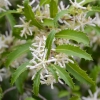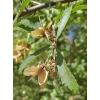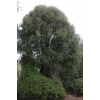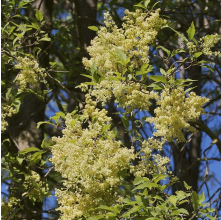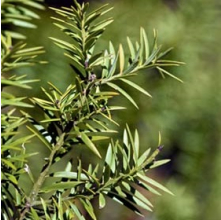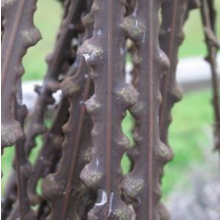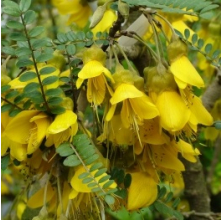Hoheria angustifolia
(Houhere, Narrow-leaved Lacebark)
Hoheria angustifolia
(Houhere, Narrow-leaved Lacebark)
Prices:
| Each | 20 or more | |
|---|---|---|
| 2.5L Pot | $9.50 | $9.00 |
Details:
| Type: | Tree |
| Growth Rate: | Medium |
| Mature Height: | 6 m |
| Mature Width: | 3 m |
| Site Condition: | Coastal, Exposed, Frost Tolerant, Heavy Soil, Loamy Soil, Sandy Soil, Waterways |
| Sun: | Full Sun, Part Shade |
| Drainage: | Dry, Moist |
| Frosts: | Hardy |
| Features: | Drought tolerant. Suitable for hedging or shelter. Attractive to birds, insects and bees. Colorful perennial. Rongoa. Low Flammability. Flower colour: White. Foliage colour: Green. Fruit colour: Yellow-winged. Native. Suitable restoration species. |
Hoheria angustifolia, Houhere, commonly known as Narrow-leaved Lacebark, is a tree native to New Zealand. It is a member of the family Malvaceae and is known for its striking appearance, with its slender leaves and attractive flowers. The leaves of Hoheria angustifolia are narrow and lanceolate.
The flowers of Hoheria angustifolia are one of its most distinctive features. They are typically large and showy, measuring 1.5-2 cm in diameter and arranged in clusters at the tips of the branches. The flowers are usually white and fragrant, and attract pollinators such as bees and butterflies.
The bark of Hoheria angustifolia is smooth and greyish-brown when young, becoming rougher and more fissured with age. The bark peels off in strips, revealing a lighter colored inner bark, which adds to its aesthetic appeal.
Hoheria angustifolia is primarily grown as an ornamental tree in gardens and parks, appreciated for its graceful form, attractive flowers, and interesting bark. It is also used in ecological restoration projects for its ability to attract pollinators and provide habitat for birds and insects.
History of use: The inner bark of Hoheria angustifolia has been used traditionally by Maori for making rope and twine.
Habitat: A common mostly lowland forest species frequenting alluvial forest where it may at times be dominant. Hoheria angustifolia is often an important host for taapia (Tupeia antarctica).
Flowering: Summer [December - March]
Fruiting: Autumn [February - April]
Plant Calendar:
| Jan | Feb | Mar | Apr | May | Jun | Jul | Aug | Sep | Oct | Nov | Dec |
|---|---|---|---|---|---|---|---|---|---|---|---|
| N | N | N | N |
| Flowering | Fruiting | Both | |
| Key |
| Fruit | Seed | Nectar | |
| Key | F | S | N |

